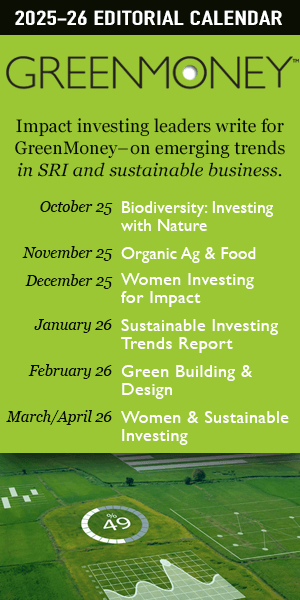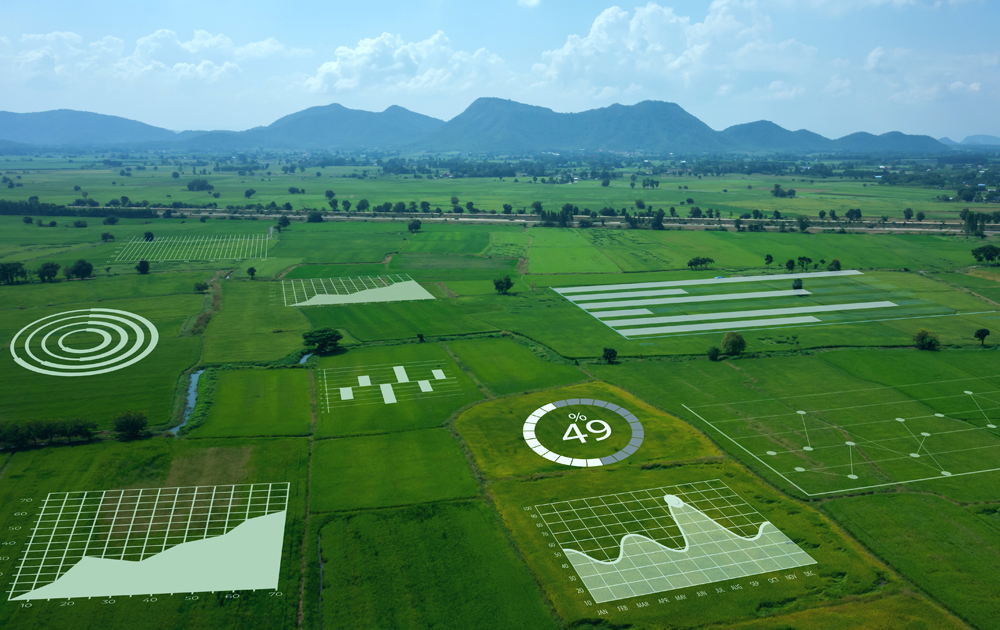 Above Infographic excerpt, shown below – HIP Climate Threat Resilience Ratings of US Counties
Above Infographic excerpt, shown below – HIP Climate Threat Resilience Ratings of US Counties
When sailing your portfolio into the future, would you want a top-heavy boat? Or a boat that is stable through the waves of future risks? “Green bonds,” “social bonds” and “sustainability bonds” – these labels bring comfort to impact investors. Yet, are all green, social and sustainability bonds fully safe for the forthcoming 30 years?
Our HIP Investor Ratings of 270,000 bonds – whether issued by more than 100,000 municipalities, 14,000 corporates, or 200 sovereigns – evaluate the possible future risks and future opportunities of the underlying issuers and use of proceeds.
As of August 30, 2024, HIP has evaluated 11,487 bonds that are labeled “green,” “social” or “sustainability-linked,” which seek to bring solutions like reducing pollution, delivering cleaner water, spurring more affordable housing, or bringing climate action forward to society as well as to your portfolio.
These positive impacts can build a better world and could bring more stable income and a higher-confidence of principal repayments in the future. Yet they also need to be evaluated for climate risk and resilience.
What are Green, Social and Sustainable Bonds Funding?
What are the key uses of proceeds in green, social and sustainable labeled bonds?
Of the 6,058 green bonds we have evaluated, more than a third of bond proceeds mention a (37.5%) focus on water quality improvements, while a tenth of them (10.9%) target effective treatment of wastewater; overall, about half of Green Bonds are issued by Water and Wastewater Utilities.
Additionally, energy solutions (5.3%) and pollution reduction (5.8%) are the focus of green bonds. Top issuers of Green Bonds are: Transportation District of New York and New Jersey (415 bonds), and state water bonds from New York state (313), Indiana (259), Iowa (193) and Massachusetts (175); yet also include educational institutions, energy utilities, and healthcare entities.
Of the 3,512 social bonds HIP has evaluated, more than a third of bond proceeds (34.2%) target housing, including affordability (25.5%), single family properties (13.7%), moderate-income families (12.7%), and can be linked to Ginnie Mae (GNMA, 4.5%). Overall, 88% of Social Bonds are from Housing authorities, while Education issuers cover about 7% of issuances. Top state-housing authorities of social bonds include: Illinois (226 bonds), Ohio (184), Massachusetts (172), Pennsylvania (163) and Rhode Island (160).
Of the 1,917 sustainability-linked bonds, just as the 17 UN Sustainable Development Goals are wide-ranging, so are these issuances. One-fifth (20.7%) focus on multi-family housing solutions, and one-sixth mention “rehabilitation” (16.6%). Efficiency in energy or water is a tenth of these (9.9%), and LEED-standards are present in 7.8% of these bonds. Poverty reduction (3.9%) and tenant-occupied housing (3.1%) seek to cover renters not just home-owners. Top issuers of sustainable-linked bonds include: New York City housing (778), New York State housing (352), and Massachusetts housing (212).
The average impact of green, social, and sustainability bonds are generally “net positive” (over 50 on a 100-point scale of sustainable to extractive). Impact investors typically want to hold higher-impact bonds in their portfolios.
Climate Risks Persist, Possibly Offset with Resilience
In the USA’s 3,100 counties, more than 40 years of FEMA’s (Federal Emergency Management Administration) recovery funding from intense and extreme weather events illuminate the risks across geographic regions of the United States.
Four main categories of weather – cold, heat, water, wind – summarize a range of events that can overwhelm buildings, roads, and infrastructure of energy and water.
In addition, facilities in each geography may add risks – nuclear power plants, toxic waste sites, waste dumps – which can negatively impact the ecosystem, from polluting drinking water from coal ash ponds that are flooded to a nuclear meltdown from a river overflowing.
These risks can be mitigated by resilience factors. For example, forests can absorb winds and rain more than farmland which can carry excess nitrogen fertilizer into waterways. Also, stronger community relationships can help regions recover when under stress. Of course, government policy and planning, including climate actions and defensive posturing, enhance the resilience of a region. Whether 3,100 counties, 84,000 census tracts, or 8 million census blocks, these future risks and resilience factors can be evaluated to specific GPS coordinates.
In the US map of 3,100 counties, the more red-colored areas are subject to more intense climate events and riskier physical sites that amplify the ripple effects of climate events, like hurricanes, tornadoes, ice storms, and heat waves.
Yet the bluer-colored areas are not immune to intense weather (e.g., El Nino storms in the Pacific, or the “perfect storms” of the Atlantic coast), the resilience in the Northern states and counties benefit from more forest areas, more community organizing, and more proactive government policy and climate-action plans.
Hence, for any corporate bond, municipal bond, or sovereign bond, a “climate threat resilience” rating as we call it at HIP Investor can be applied to your fixed-income portfolio holdings.
Credit Ratings Seem to Ignore Higher Climate Risk
Our analysis of 270,000 bonds from 3,860 issuers shows that Credit Ratings (such as Moody’s) may not incorporate the full set of meaningful future risks over the duration of the bond.
The scatterplot below charts the actual near-zero correlation (0.02%) among Moody’s Credit Ratings and HIP’s Climate Threat Resilience Ratings. This means a AAA bond from Texas, Florida, or Puerto Rico may not fully factor in the next three decades of hurricanes, floods, or winds – nor the lack of resilience in those geographies.
In fact, there may be opportunities to arbitrage these future risks. For most investors, avoiding these risks could be a prudent strategy – just as muni-bond ETFs do, such as the VanEck HIP Sustainable Muni ETF (ticker: SMI). In the SMI ETF, as of August 30, 2024, there are no holdings in Florida or Texas, due to higher climate risk and lower climate resilience, despite an elevated bond rating from Moody’s.
Are Green, Social and Sustainability Bonds also Climate Resilient?
While the bond proceeds for those labeled Green, Social, and Sustainable typically fund positive-impact projects, programs, and infrastructure, investors need to be aware of the climate risks too.
As you can see in the chart below, plotting 291 issuers of the 11,400 bonds, some of the issuers are in riskier geographies, such as Louisiana, the Florida Housing Agency and Harris County’s (including Houston) water utility.
The super-majority of green, social, and sustainable bonds evaluated by HIP have a “higher-impact” rating (above 50 on a 100-point scale) based on the data-driven performance, including schools, hospitals, energy and water utilities, and local governments.
Yet even the “green” or “sustainable” or “social” purposes of the bond may be at risk from future intense climate events, or lack of resilience defenses.
How to Optimize Risk and Return in Your Bond Portfolios
Bonds of corporates, munis and sovereigns are intended to be the ballast in your portfolio, just as a ship needs a strong hull and rudder. To evaluate these future risks requires analyzing the effectiveness of achieving the issuer’s mission, the actual benefits of the planned proceeds, and the potential surprises like climate in the coming years.
As we have shown above, the traditional credit ratings may not evaluate the full future risks of a 30-year bond. Our experience at HIP has shown that many lower-income communities can have highly effective hospitals saving patients, above-average school outcomes for kids, and cleaner water and energy for communities. This is not always consistent with the traditional belief that higher tax revenues collected in higher-income areas automatically generate better outcomes – it is a matter of competence to deliver its mission.
Evaluating future risk can be accomplished with data-driven factors: achieving its mission, specific results from use of proceeds, and optimizing risk and resilience from future climate intensities.
Impactful investors keep an open mind about the full spectrum of risks, and of opportunities. Your bond holdings can anchor a higher-impact portfolio that can both “do good” and “make money” in the coming decades.
Article by R. Paul Herman, founder and the managing member of HIP Investor Ratings LLC and Liana Lan, Climate and Impact Investing Analyst at HIP Investor Ratings LLC.
DISCLOSURES:
HIP Investor Inc. is a state-registered investment adviser in several jurisdictions (CA, IL, LA, NC, NY), and HIP Investor Ratings LLC is an impact-ratings firm evaluating impact and ESG on 410,000 investment ratings, including 126,000 municipal entities, 270,000 muni-bond issuances, and 14,000 corporates for equities and bonds. HIP Impact Ratings are for your information and education – and are not intended to be investment recommendations. Past performance is not indicative of future results. All investments are risky and could lose value. Please consult your investment professionals to evaluate if any investment is appropriate for you, your goals, and your risk-return-impact profile. This is not an offering of securities.
HIP Investor, Inc. (“HIP”) is a provider to Van Eck Associates Corporation (“Van Eck”) of proprietary research products and services, including ESG ratings, Sustainable Development Goal ratings, Opportunity Zone mapping, Climate-Threat and Resilience ratings, and Human Impact + Profit ratings (collectively, the “HIP Ratings”). HIP is the exclusive provider to Van Eck of HIP ratings and similar data used in connection with any sustainable municipal-bond ETF provided by Van Eck, including the VanEck HIP Sustainable Muni ETF.
HIP Investor, Inc. (“HIP”) receives certain fees related to the assets under management (AUM) of the VanEck HIP Sustainable Muni ETF, which creates a conflict of interest with actual and prospective clients of HIP, and biases the objectivity of HIP when discussing, evaluating, and recommending the VanEck HIP Sustainable Muni ETF to actual or prospective clients of HIP. The determination to purchase or utilize the VanEck HIP Sustainable Muni ETF is an important decision and should not be based solely upon HIP’s recommendation, guidance, or services. HIP is an independent contractor of Van Eck Associates Corporation; however, HIP does not control or supervise the services or products of Van Eck Associates Corporation, and reference to the VanEck HIP Sustainable Muni ETF does not mean that HIP has performed any level of due diligence on the services or products of Van Eck Associates Corporation. Users of HIP’s website, as well as actual and prospective clients of HIP, are urged to perform their own due diligence on, or consult with a separate registered investment adviser with respect to, the VanEck HIP Sustainable Muni ETF.
There is no obligation to purchase or utilize the VanEck HIP Sustainable Muni ETF.





















